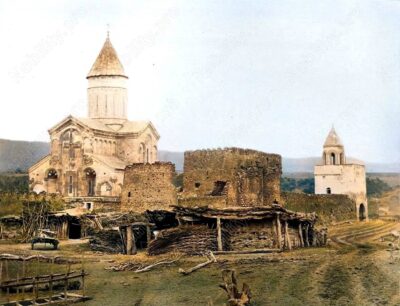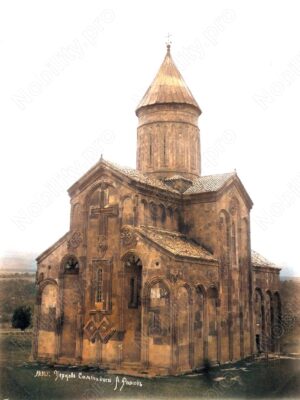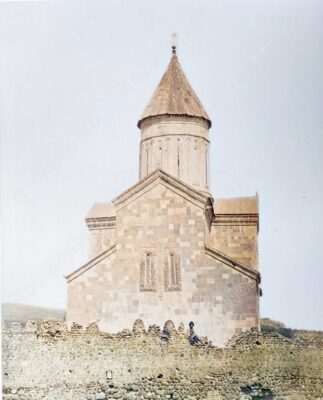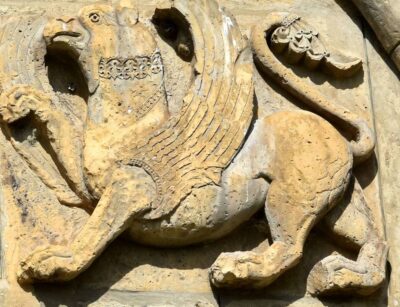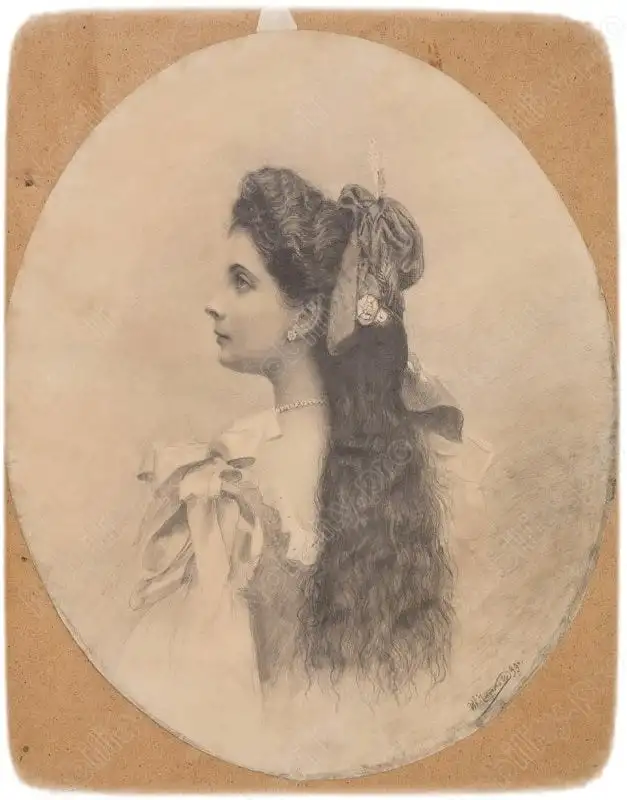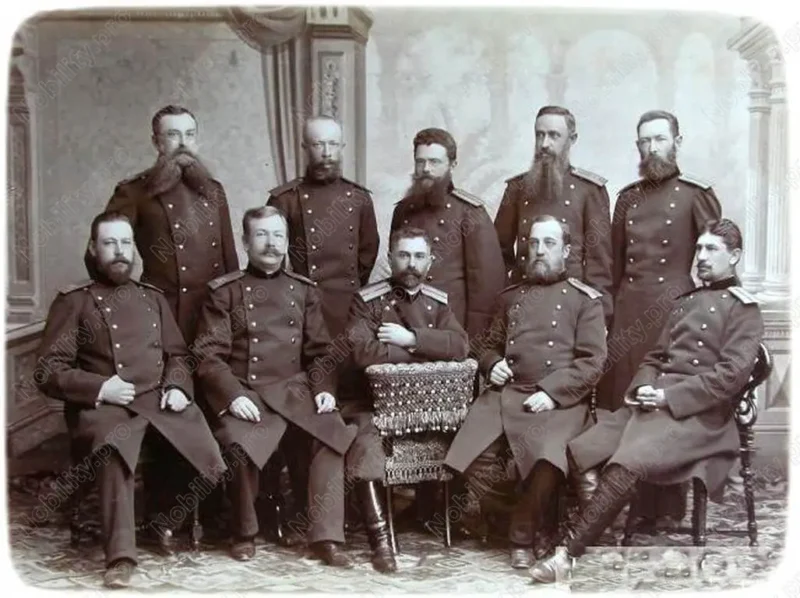Samtavisi Cathedral – Temple of Christ the Savior stands close to the main highway towards west Georgia, in the middle of a fenced yard that dominates the center of the village. The barrel of its dome erected to the heavens is noticeable even from a long distance, but real merits and beauty of the temple can only be perceived at its close look. Apparently Samtavisi have become the center of eparchyin earlier times – one of the 13 Assyrian Fathers, Saint Illarion settled here in VI c AD. So, by all means the church should have been built there in those times.
The remains of a large basilica excavated on the territory adjacent to the current church from the south perhaps belong to that initial church. The present construction built in 1030 is made of neatly hewn stone. It is a domed building with so called “incorporated cross” configuration heawing four columns supporting the dome.
The construction inscription curved on the stone slab narrates a history of the church foundation – Bishop Illarion – son of the local nobleman Vache Kanchaeli was the church building donor. Quite possible that the referred above Bishop Illarion was not only the donor, but also the church designer. Anyway this clerical could have built the church in a nearby village of Ashuriani, current configuration of which has unfortunately been almost totally altered.
Provided the aforementioned assumptions are true we do know the name of one of the outstanding medieval architects of Georgia. Despite the fact that the Cathedral has not been survived in its original state – it suffered considerable damages in XV c. (the dome, western façade and north-western column in the interior were restored or rebuilt shortly after the destruction took place) and even though only southern porch had avoided affects of those hard times, general artistic features of the temple are unchanged – the entire construction is admirably light, proportionate and rised.
This temple has got particular historical significance – it is the very fist of so called “inscribed cross” – type domed churches, which have become common for Georgian art from that point onward. External outline of the temple is close to square-shape, interior is rather simple and laconic, distinguished for multitude of panorama achieved through an optical intersection of arches and supporting columns.
Decoration of the eastern façade created by the architect of Samtavisi is of the particular importance. This is the depiction of three crosses – a symbolic repetition of the scene of Mount Calvary Crucifixion actively used in Georgian church architecture since VIII c as the essential element for the decoration of the sanctuary exterior. In this particular case the tri-cross decoration of Samtavisi is represented as absolutely unified composition created by means of thoroughly interdependent elements. Repetitions or variations of such kind of decoration can be seen on number of Georgian churches.
Fretwork used for decoration of Samtavisi window framings, crosses or upper sections of the facades considerably determine the impression created by the entire construction. Highly expressive floristic ornamentation coupled with matchless craftsmanship of its performance, plasticity, and beauty and at the same time tangibility and strength of the ornament is quite rare even for X-XII cc – the period that abounds with samples of perfect fretwork. Very expressive small sculpture of a griffon apparently the defender and guard of the Paradise, cut in the corner of eastern façade gains eloquence to the construction.
The sanctuary of the temple interior is adorned with XVII c. wall painting performed by the Bishop of Samtavisi Meliton. The porch with the ball-tower on top incorporated into the defensive stone wall should be of the same period The same should be stated regarding the Bishop’s residence – now in ruins.
